Last updated on January 31, 2024

Questing Beast | Illustration by Igor Kieryluk
Among all the aggro decks out there, none of them scream “smash” quite like Gruul (). The Gruul archetype is historically known as one of the fastest decks in the format, benefitting from both the hasty, impulsive nature of red decks while also tapping into the big creatures of green.
If you like fast paced action where your win is usually decided on turn 4 or 5, Gruul is the deck for you.
The Deck
Creatures (33)
Zhur-Taa Goblin x4
Scavenging Ooze x3
Questing Beast x4
Pelt Collector x4
Llanowar Elves x4
Klothys, God of Destiny x2
Gruul Spellbreaker x4
Burning-Tree Emissary x4
Bonecrusher Giant x4
Sorceries (2)
Primal Might x2
Artifacts (3)
Embercleave x3
Lands (22)
Fabled Passage x3
Ramunap Ruins x2
Hashep Oasis x2
Stomping Ground x4
Cragcrown Pathway x4
Forest x5
Mountain x2
Sideboard (15)
Tibalt, Rakish Instigator x2
Mystic Repeal x2
Grafdigger's Cage x3
Abrade x3
Shifting Ceratops x3
Redcap Melee x2
There are several ways to build a Gruul deck. In the Historic format, however, there are two “shells” that players play with great success.
On one hand, you have what I like to (wrongfully) call Midrange Gruul, because it has an aggro strategy that includes both low mana and high mana creatures in contrast to most aggro decks. On the other hand, there’s Collected Company Gruul. It’s almost identical to the first deck, except it runs a playset of Collected Company instead of 4- and 5-drops to try and fetch two 1- to 3-drops off the top of the deck at instant speed.
The deck we’ll be covering today is the “midrange” variant of the Historic Gruul list. But, if you want to, you can very easily turn this into CoCo Gruul by swapping Questing Beast for Collected Company.
The Curve
Gruul is a very easy to navigate and fast-paced deck. You always want to make sure you have a hand with a decent variety of different lands and 1-, 2-, and 3-mana creature drops so that you can keep pushing out action every single turn. The deck is sometimes so easy to navigate that it almost plays itself!
So, you can ensure a headache-free experience when playing this deck. The opposite is to be said for your opponents, literally and figuratively.
The 1- and 2-Drops
As a Gruul player, you want to curve out and you want to do it before your opponent has a chance to set up combos or a board. If you’re up against an aggro deck, you want to force your opponent into positions where they need to poorly trade their resources to get rid of your creatures. It’s possible to go quite wide as early as turn 2 thanks to Llanowar Elves and Burning-Tree Emissary.

A turn 1 Llanowar Elves opens up a bunch of combos. You could go straight into a 3-drop on turn 2 or play a Pelt Collector into a Burning-Tree Emissary into something like Zhur-Taa Goblin.
There’s a good reason why the Emissary was banned for quite some time in Historic. It’s a very solid card that lets you put a free 2/2 body on the field on turn 2. The good thing about this is that if you get a 1-drop elf on turn 1 and then play your Emissary on turn 2 into any of the other 2-drops, you might be able to play an Embercleave on turn 3 with ease.
Alternatively, you could use the mana that Burning-Tree Emissary produces and go for a Primal Might or Stomp to remove an opponent’s creature. Regardless what your hand is like, Emissaries help you make big plays early on!
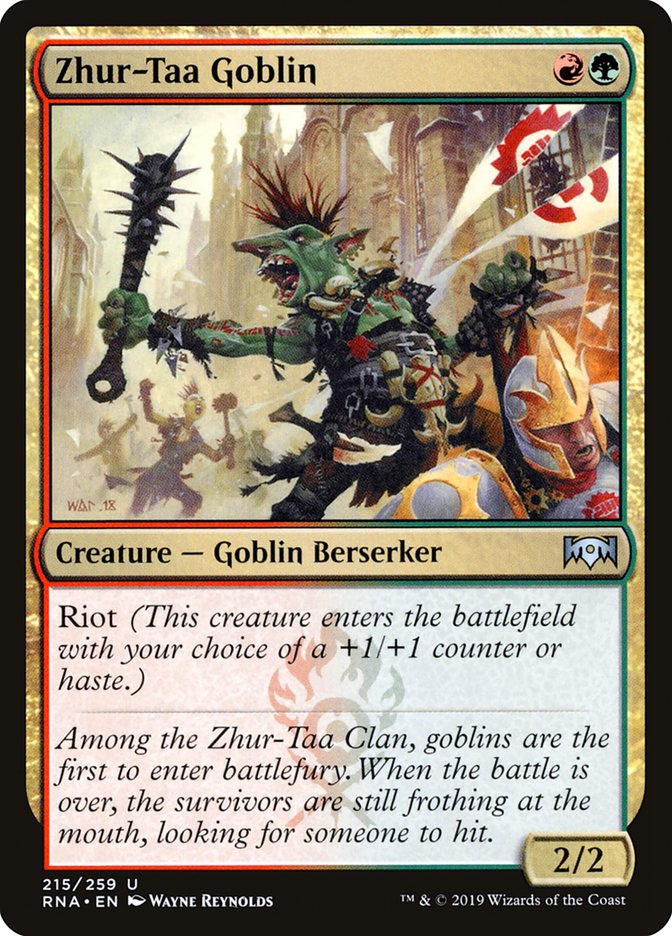
Zhur-Taa Goblin is great, but if you want to switch things up a bit, there are two other cards that fit perfectly in its slot. Namely Robber of the Rich or two copies of Gallia of the Endless Dance. With the current meta shift, I like the flexibility of the goblin coming in as a hasty creature or a 3/3 blocker, especially since that means that it can be a 4/4 with Embercleave attached to it or help buff an existing Pelt Collector.
The 3-Drops
The 3-drop slot isn’t as flexible as the 2-drops. I’ve tried many different builds in both BO1 and BO3, and these are without a doubt the best in the Historic format. Let’s dive into it.
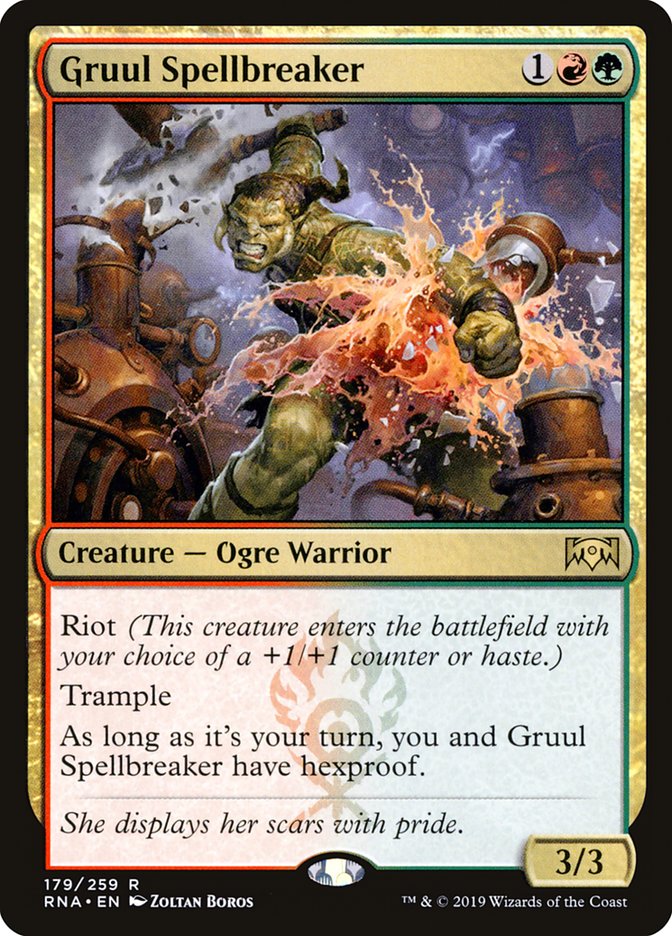
Gruul Spellbreaker is amazing because it has riot and trample, plus it gives you and itself hexproof during your turn. The hexproof is handy because there are a lot of decks out there that’ll try to destroy or bounce your creature when Embercleave comes into play. The Spellbreaker makes sure if you select it as the carrier of your game-winning equipment, that during that turn at least your opponent can’t stop it from doing its thing.
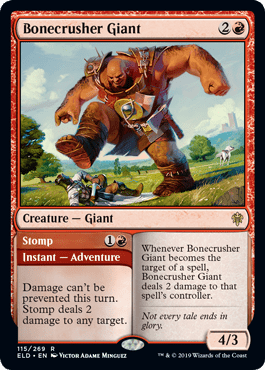
The Bonecrusher Giant, on the other hand, is not the best 3-drop as a creature. With Stomp tied to it, though, it’s perfect as an early removal spell or, in some cases, an early burn spell if you have nothing to curve into with your Burning-Tree Emissary. Having a 4-attack body also synergizes well with Pelt Collector, helping it grow to 4 power if it has two +1/+1 counters already.
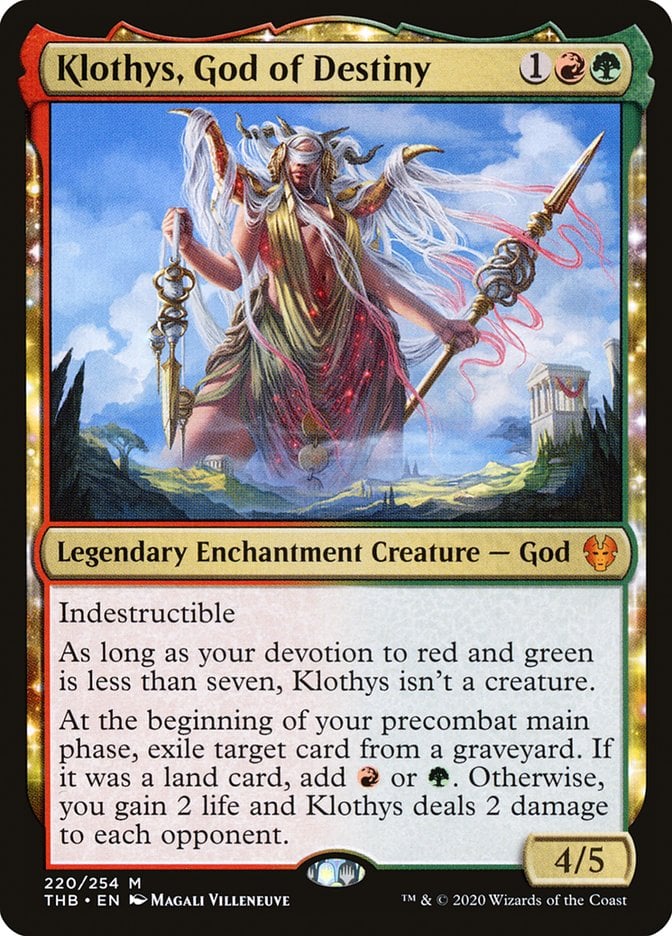
Finally, we have Klothys, God of Destiny. This used to be a sideboard option, but with all the graveyard decks around like Rakdos Self-Mill and Mono Black Pharaoh’s Gift, Klothys is the perfect to keep key components out of your opponent’s graveyard and slow down their strategy. On top of that, even the two life you gain from exiling a non-land can be backbreaking for mono red or other aggressive matchups. Until the meta changes, Klothys is likely going to stay in the main deck for quite some time.
The 4-Drop
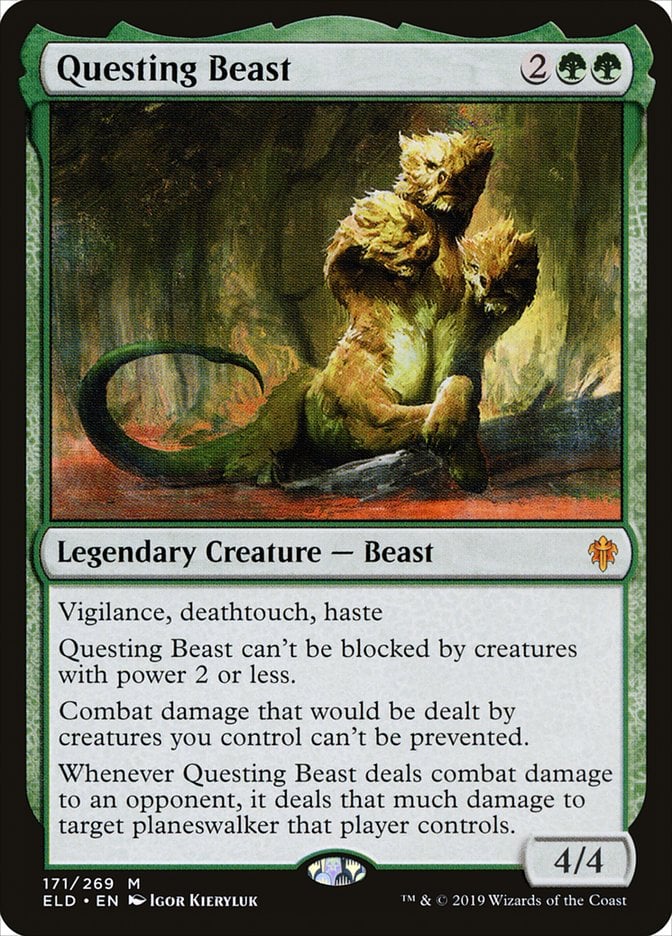
The juicy part of the deck. My personal all-time favorite since the release of Throne of Eldraine is Questing Beast. No matter how many times you play this card, you always end up in a situation of, “Oh! I forgot it did that!” Just look at this magnificent beast. Can you not feel a sense of pride that we’re able to play this?
Questing Beast is great against a variety of decks, especially ones that like to swarm the board with blocking tokens since the Beast can’t be blocked by creature with power 2 or less. On top of that, it has haste, vigilance, deathtouch, makes sure combat damage can’t be prevented, deals the same damage to a planeswalker an opponent controls if it connects damage, and I’m pretty sure (but don’t quote me on this) that, if you ask it nicely, it’ll even do your taxes. Or was that Thalia?
Questing Beast is by far the best 4-mana creature green has to offer in Magic Arena. You take full advantage of that as Gruul. Vigilance is a huge help as well since it’ll make sure you always have a big blocker on the field.
The Damage Buffs
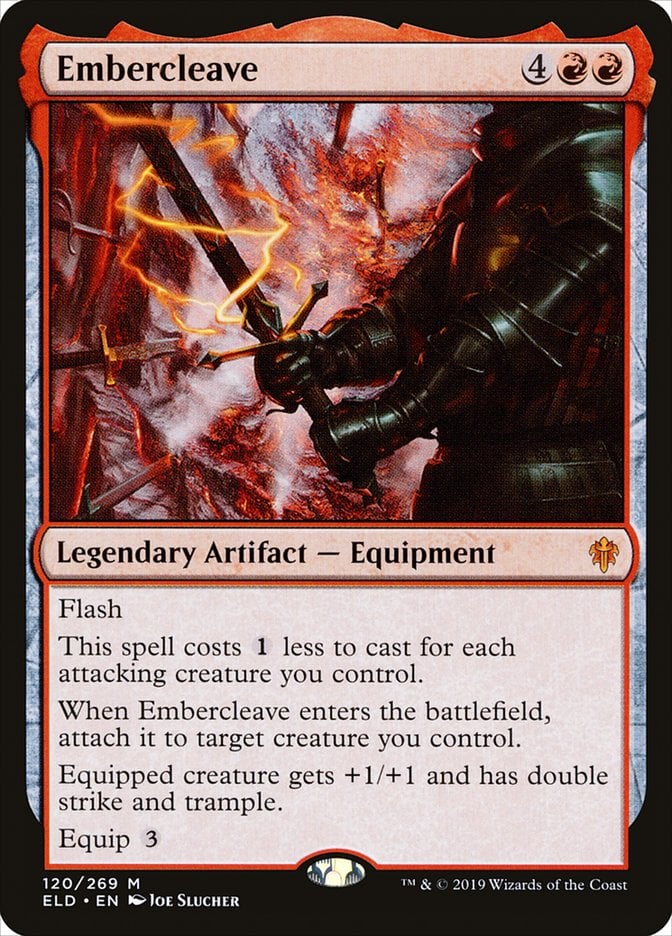
This deck runs Embercleave. There’s not really much to say about this card. You attack in with as many creatures as possible, cast the cleave, attach it to your biggest creature, win the game. It’s as simple as that.
Giving your creature +1/+1, double strike, and trample is really good, especially on a big creature like a 4/4 Gruul Spellbreaker or even Questing Beast if you got slowed down a turn. Embercleave is the embodiment of aggression.
The deck runs two tiny techs that’ll likely rarely matter, but there may be a game or two where they will and you’ll be glad you have them.
There’s Hashep Oasis, which can help you make a creature even bigger at the cost of sacrificing itself or another desert and tapping some mana. And we have a few copies of Ramunap Ruins as well in case you ever find yourself needing to deal that last one or two damage. The Ruins also don’t target your opponent, so it’ll still hit even if they have hexproof .
Rules of the Mulligan
When taking a mulligan for this deck, there are four key components that we like to see the most:
- At least one dual colored land like Stomping Ground;
- A 1-drop creature, preferably Llanowar Elves;
- At least one playable creature for turn 2 or 3 if you have a turn 1-drop, or a playable creature for turn 2 and 3 if you don’t have a 1-drop;
- A clear pathway to either Questing Beast or Embercleave in-hand, including either creatures or lands that can generate the double mana requirement.
You can break these rules if you’re in a situation where you don’t want to mulligan further:
- You have three perfect lands that help you fix both double green and double red mana, plus a bunch of playable creatures. It’s risky to keep, especially if an opponent runs board wipes, but sometimes you need to take a risk.
- You have three lands and Klothys, God of Destiny against an obvious or suspected graveyard deck or a burn/aggro deck for the lifegain.
These “rule breakers” may seem obvious, but when you play Gruul, not hitting double colored lands to curve into your Questing Beast or Embercleave can cost you the game. Having the right lands is half the battle. Also, janking out a graveyard or burn deck with Klothys can be really good.
Sideboarding
There are plenty of decks in the Historic meta and sideboarding can vary from matchup to matchup, but it’s generally pretty straightforward with Gruul. Regardless, lets cover the problematic matchups and how to handle them.
Graveyard Matchups
Because the mulligan somewhat revolves around deciding if you want to keep Klothys, God of Destiny, especially in a hand with no other 1-drop or 2-drops, there’s a little trick I use to decide if I keep her in hand or not. Most graveyard/self-mill decks run Lurrus of the Dream-Den as their companion. Sometimes it’s a blue/white auras deck instead, but the majority of the time you’ll face Rakdos Mill, Dimir Rogues, or a variant of these decks.
If you see Lurrus, keep Klothys hands even if you don’t have many other plays. You’ll likely draw into blockers anyways. Keep in mind that these decks run Thoughtseize, so it could end poorly, but having to face discard after discard on top of control or having your 1- to 3-drop creatures stolen by cards like Claim the Firstborn doesn’t feel good at all.
Klothys keeps your opponent's graveyard clean so they can’t return Kroxa, Titan of Death's Hunger or re-use cards with Dreadhorde Arcanist. On the other hand, Klothys can be very handy in keeping your own graveyard empty when you’re against Dimir Rogues, so they don’t get their rogue bonuses.
We run three copies of Scavenging Ooze as well, but this card is likely to get hit by some sort of removal spell. If it does manage to untap, though, most graveyard synergy decks will have a hard time dealing with it. Remember, an Ooze with just two +1/+1 counters on it can deal a whopping 10 damage if you manage to put an Embercleave on it! So, there’s no shame in spending turn 3 buffing the Ooze up to go for the kill a turn or two later.
There are some rare decks that use God-Pharaoh's Gift as their win condition, putting it into play with Gate to the Afterlife. If you notice a mono black deck that’s self-milling a lot, beware!
Regardless, if you play BO3, you have some amazing Grafdigger's Cage copies to bring in. You can slide these in instead of two Bonecrusher Giants and a single Zhur-Taa Goblin.
Control and Ramp Matchups
Control decks tend to run Yorion as their companion. If you see a deck like this, you sort of have to win around turn 4. Since Gruul doesn’t have any stable turn 3 win-cons, you need to rush a win before they can set up things like Doom Foretold (deck guide here) or clear your board.
If you see a Yorion, make sure you have a very good curve in hand full of 1-, 2-, and 3-drops into something like Embercleave. Even if it means you mulligan to five.
Another semi-control decks to look out for is colorless ramp. You want to avoid letting them resolve Ugin, the Spirit Dragon because, if they do, your board gets exiled and it usually means game over. Go hyper aggro against them and hit them hard and fast.
As far as sideboarding goes, Mystic Repeal and Abrade can come in handy against matchups that run enchantments or artifacts in their control package. The latter is especially useful against colorless ramp.
It feels really good when your opponent plonks down a Doom Foretold and you just go, “nope!” Same for things like Elspeth Conquers Death, even though this card isn’t as common in control matchups.
Aggro Matchups
The main aggro decks that might be problematic are goblins, mono red, and maybe mirror matches.
Goblins
The way to beat Goblins is to delay their Muxus, Goblin Grandee play. Keep any type of ramp or cost reduction off the board. Key cards to get rid of are Skirk Prospector and Goblin Warchief. If you can Stomp these targets early on, it puts your opponent in a bad spot.
If you play BO3, make sure to slide in copies of Grafdigger's Cage because it stops their Muxus from fetching goblins from the deck. Be careful, because goblins can pull off a turn 3 win with Muxus and Skirk Prospectors.
Mono Red
Against Mono Red, keeping their early drops off the board and putting big blockers up can be helpful because a lot of the cards in their deck synergize with damage and prowess. You also want to race them to the finish line, though. Given enough time, they’ll just shock you to death with various 3-damage “bolts.” Find a midway between aggro and control.
In my experience, these type of aggro matchups are decided by who gets to go first. Make sure to bring your Redcap Melees to get rid of their key creatures. It can even kill a Muxus if needed in the Goblin matchup.
Blue White Auras
There is one other aggro deck that’s a poor matchup for Gruul and hard to beat: blue/white auras. I find this one especially difficult, because it tends to run Lurrus of the Dream-Den. I might keep a graveyard hate hand instead of a lot of removal only to get beaten to death by a geared-up Kor Spiritdancer.
Keep their board clear of creatures early on. Stomp Kor Spiritdancer as early as possible if you can. Sometimes that means having to get rid of a 1-drop that can protect Spiritdancer, but you always have Primal Might to finish the job the next turn.
This is a very tough matchup and likely a loss, because once your opponent has set up, there’s nothing in our deck that can out-damage their massive amounts of toughness and attack power. They usually also have the means to set up a source of lifegain. Playing defense and keeping Spiritdancers and lifelink-ers off the board should help, but try to rush them down if you can. Their deck has bad hands at times and winning by turn 4 may be your key to victory.
Tibalt, Rakish Instigator could come in handy to counter the lifegain against this matchup. He helps against generic lifegain decks as well. Either way, you can put a Tibalt or two in a Zhur-Taa Goblin slot. Mystic Repeal can help remove a card like All That Glitters from a creature as well, turning a block in your favor.
Mono-Blue Matchups
The best strategy against mono blue is getting a big creature on the board early. Because all their creature-affecting counter spells cost 2 mana, the best way to know when it’s safe to cast a creature is to cast it when they’re either tapped out or have only one blue mana available.
There’s nothing much to say about this matchup. Try to set up before they can start countering you. After you sideboard, you have access to Shifting Ceratops which can take the Embercleave slots. It’s very hard to resolve an Embercleave against a deck that counters anyway.
Kaladesh Remastered Deck Changes
With the release of Kaladesh Remastered, the high power level of recent sets means fewer cards that are interesting for Gruul. Among these cards, one stands out — namely Chandra, Torch of Defiance. It was already a commonly played card in both Pioneer and Modern Gruul lists.
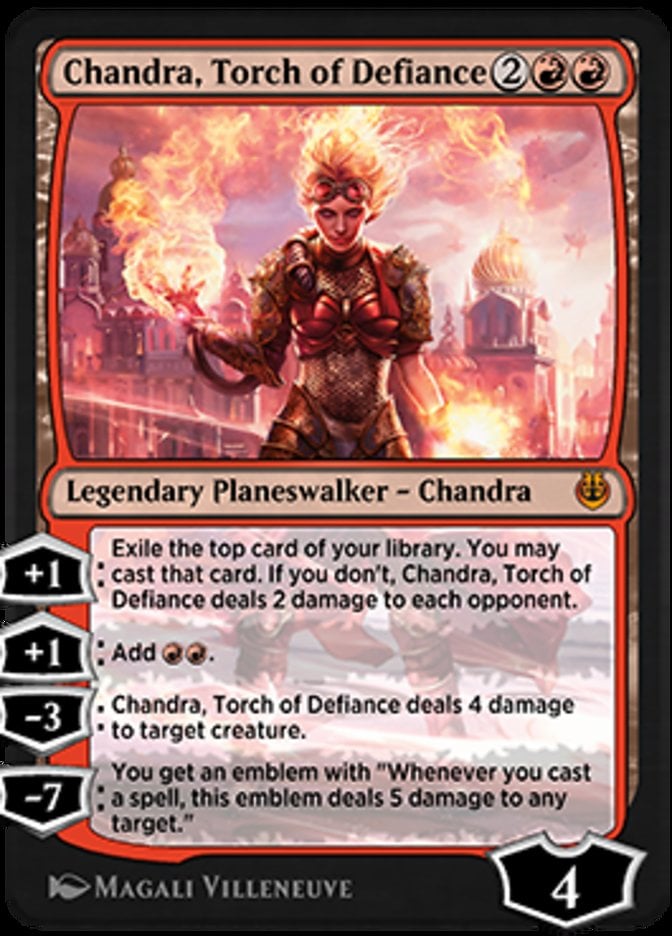
I have tested the card in the main deck and have found that even though Chandra used to be an absolute powerhouse and is still great in the aforementioned paper formats, it is not as efficient in Historic. The reason is that the power level of Historic has gone up so much the past few months that it is almost on-par with Legacy due to the many turn three and four win conditions.
If there is going to be a metagame shift towards control decks, she will become much more valuable, but as it stands now, it is mainly sideboard tech. If you wish, you could add up to three copies in the sideboard instead of Shifting Ceratops to have a very solid card that can get you back into the game after a board wipe.
The +1 ability especially is great because it nets you an extra playable card each turn. If you're a BO1 player, having Chandra in the main board can be good, but I fear it results in having too many cards that require double red mana fixing. Therefore, swapping out all four copies of Questing Beast may be the best option alongside adding two copies of Chandra plus two copies of Glorybringer instead. Then you can focus on building your mana base to fix for double double red. This gives you more certainty that no matter what, your next topdeck will be castable.
Goodbye Gruul

Llanowar Elves | Illustration by Chris Rahn
While the deck is very low curve and extremely fun and fast paced, most games that you do lose will ironically be because of mana issues. We’re in a metagame where we have access to tons of fast dual lands, though, so in Historic especially it’s less of an issue in contrast to Standard. Which is, coincidentally, one of the main reasons Gruul isn’t able to perform at its full potential in the Standard environment despite having most of the tools available, but that’s a story for a different time. (December 2020 EDIT: Now it's Gruul‘s time to shine in Standard).
Be ready to lose a fair share of games because of mana restraints. That’s okay, though, because this deck provides a very stress-free experience. Just jump online, mulligan until you have a decent hand with some 1-, 2-, 3-curve action, and just smash your opponents into the ground!
Will you win? Who knows. At least make sure that every time you cast that Embercleave on curve, you scream “Gruul smash!” loud enough to make the neighbors question your sanity.
With that said, I thank you all for spending this time with me. If you have any questions, feel free to drop by on the Draftsim Discord. I’m always more than happy to give guidance to any MTG fans out there! If you have an idea for a future write-up, feel free to let me know in the comments down there.
Good luck in your Mythic grind, and see you all next time!
Follow Draftsim for awesome articles and set updates: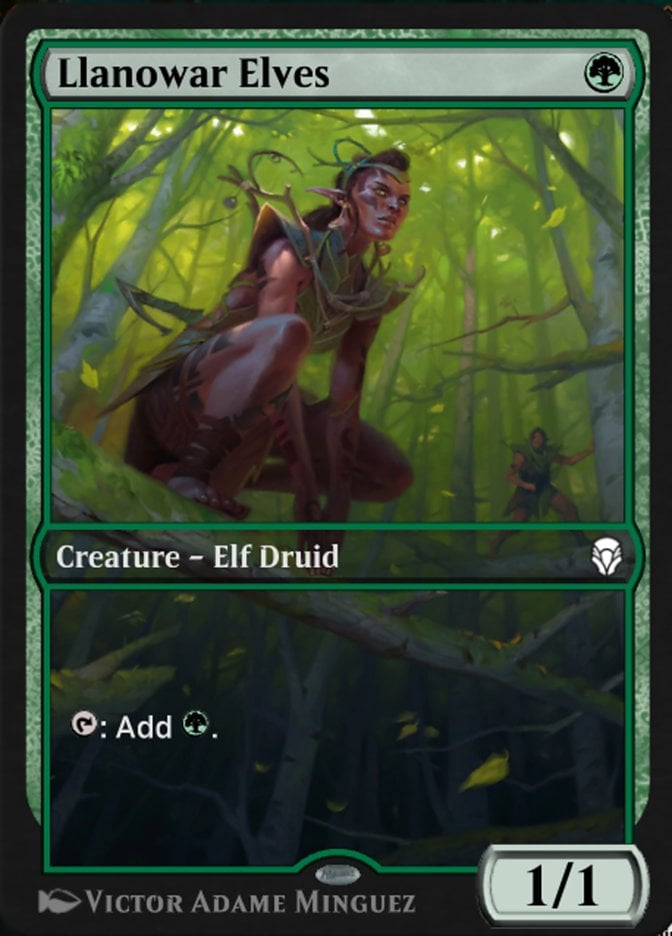
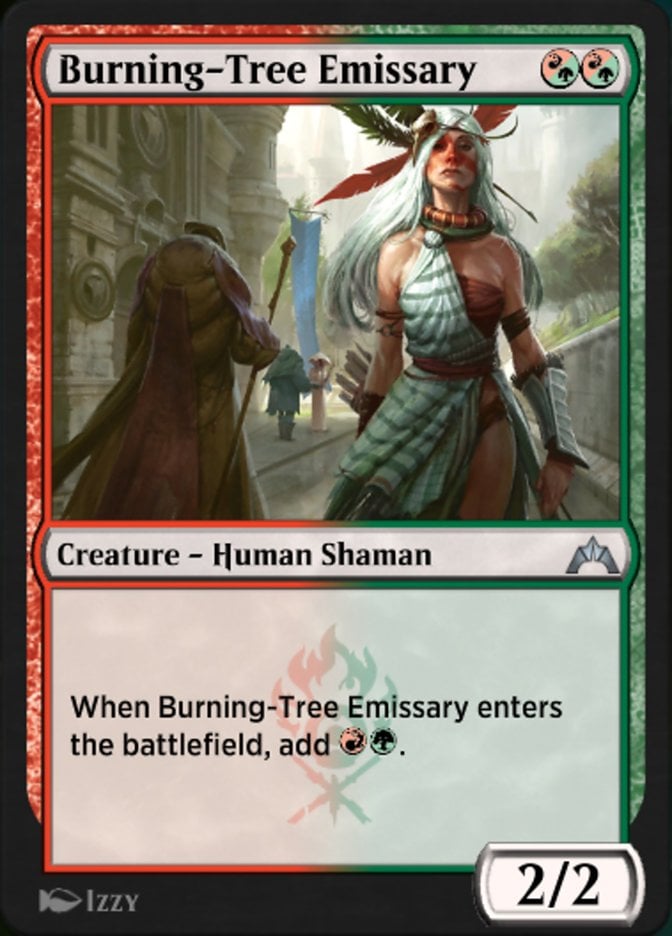
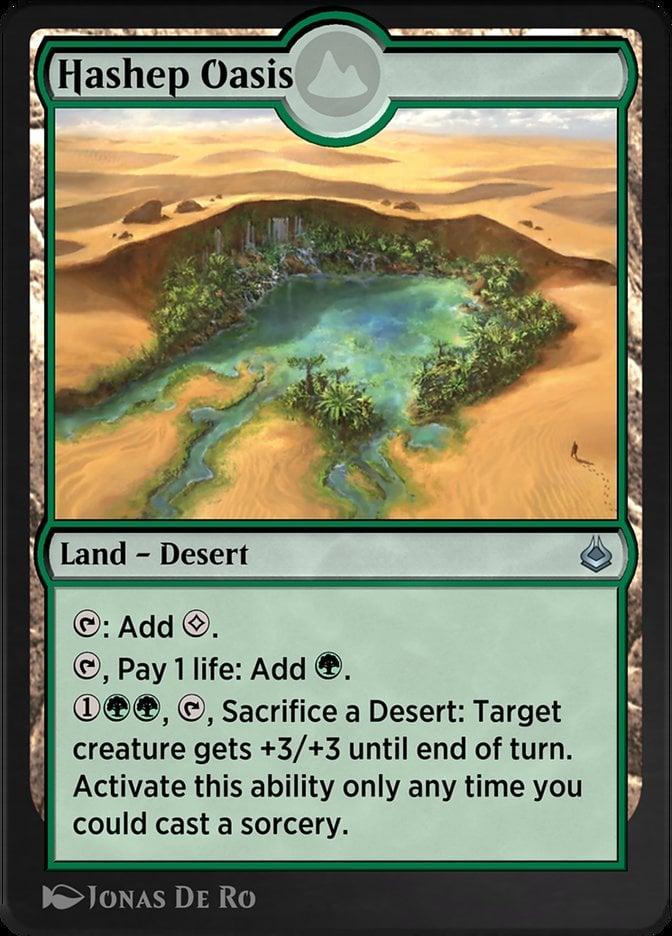
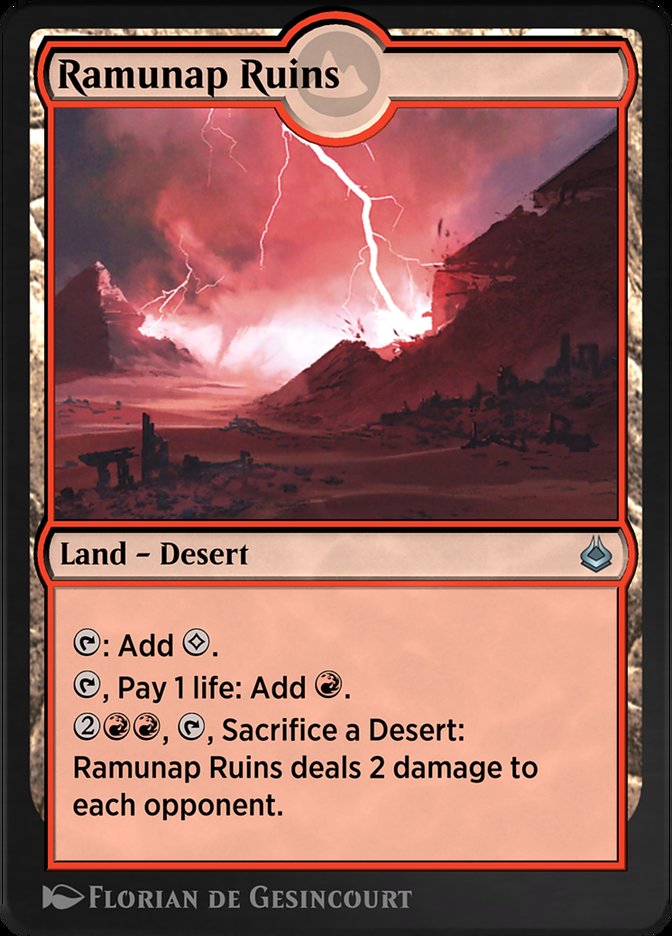
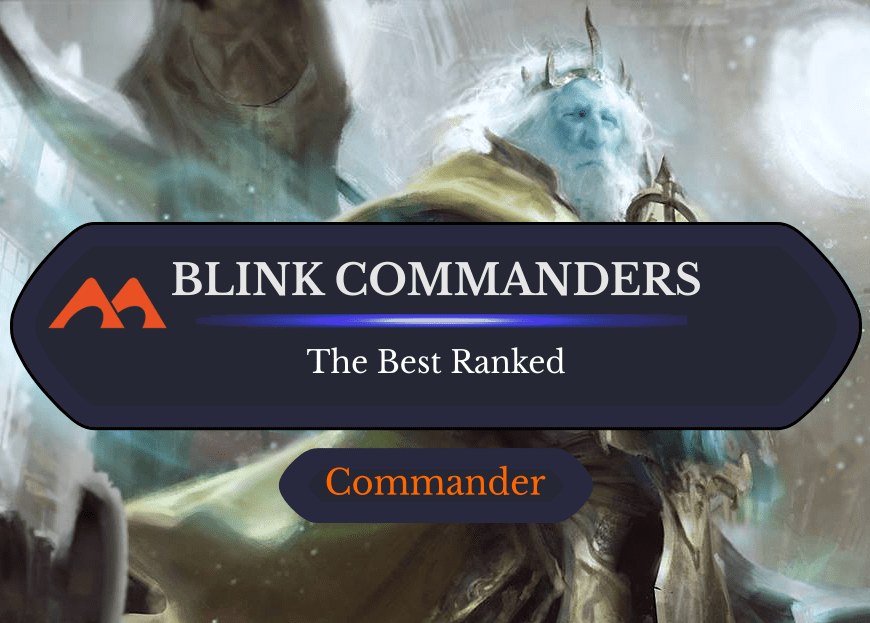
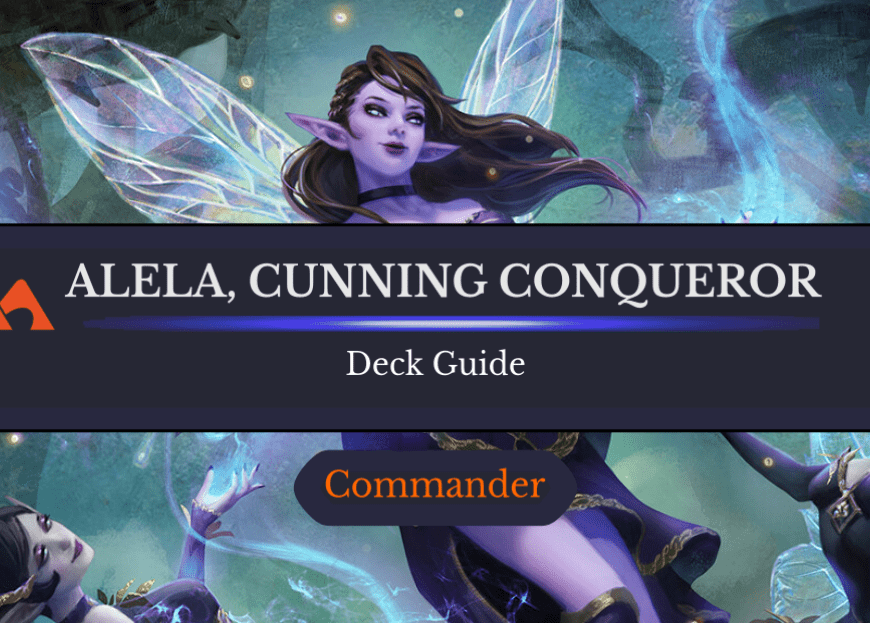
Add Comment